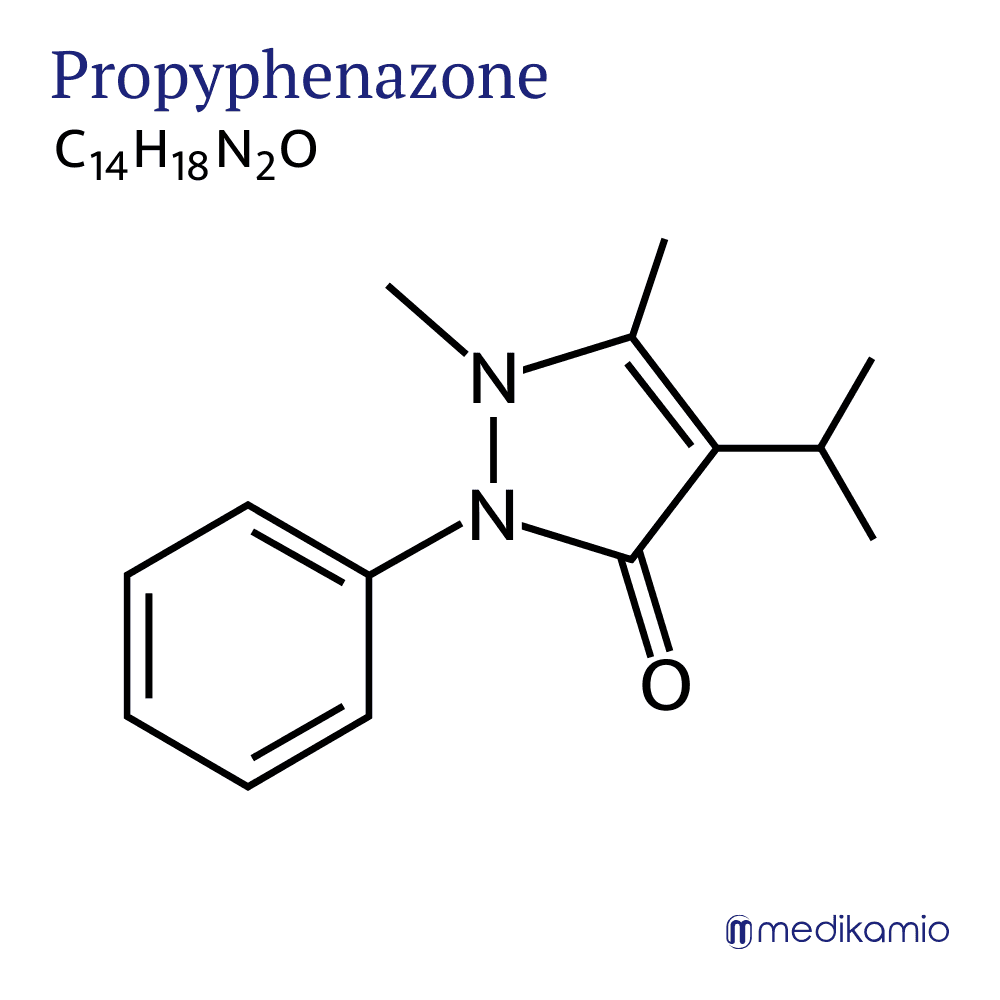Basics
Propyphenazone is used to treat fever and pain. It belongs to the pyrazolone group and is a derivative of isopropyl. The active substance is usually present as a white to slightly yellow, crystalline powder and is only slightly soluble in water. Propyphenazone was often marketed as a combination preparation with paracetamol and caffeine.

